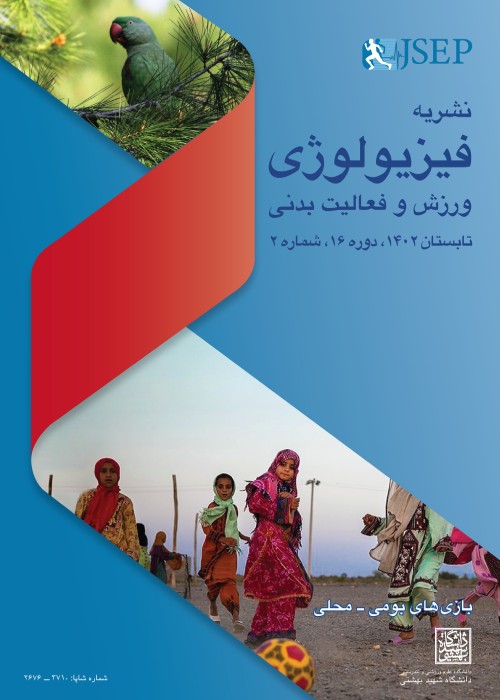Hypertrophic and hormonal responses to one session of resistance training with two different protocols in men’s sprint runner
Resistance training (RT) is an effective program for creating hormonal, functional and structural adaptations, so that manipulation of its variables induces different adaptations. Change in the secretion rate and serum level of hormones due to resistance activity is the main factor in protein synthesis and hypertrophy of skeletal muscles, so the purpose of this study was to investigate hypertrophic and hormonal responses to a session of resistance training with two different protocols in men’s sprint runner.
45 men volunteers (age: 21± 1.7 year, weight: 67.5± 4.35 kg and BMI: 22 ± 1.03 kg/m2) were randomly divided into three groups of 15 people (high-load training, low-load training and control). The training protocol includes seven movements (chest press with barbell, leg extension, biceps barbell, standing shoulder press with barbell, seated leg machine, lat pull down and triceps machine), three sets with 70% 1-RM to failure for training group with high load, seven movements (chest press with barbell, leg extension, biceps barbell, standing shoulder press with barbell, Seated leg machine, lat pull down and triceps machine), three sets with 30% 1-RM to failure for training group with low load, and no activity for control group. Thickness of biceps and vastus lateralis and serum levels of cortisol, IGF-1, testosterone hormones and testosterone/cortisol (T/C) ratio were measured at two stages (pre-test and 30 minute after the RT). The Shapiro–Wilk and the Levine tests were performed to confirm the normality of data distribution and the homogeneity of variances, respectively.
The result of paired-sample t test showed serum concentration of testosterone (P=0.005), IGF-1 (P=0.004), cortisol (P=0.020), T/C (P<0.001), thickness of biceps (P=0.001) and thickness of vastus lateralis (P=0.001) were increased only in RT group with high load compared to the pre-test. Also, the results of ANOVA and Bonferroni’s post hoc test showed the mean of serum concentration of testosterone, IGF-1, cortisol, T/C, thickness of biceps and vastus lateralis in high-load training group was significantly higher than the low-load training (P ≤ 0.05) and control (P ≤ 0.05) groups in the post-test.
Although one session of resistance training with an intensity of 30% of 1RM did not cause a significant change in the serum level of hormones and hypertrophy, it seems that hypertrophy produced after a 70% of 1-RM acute resistance training protocol (and with repetition to failure) appears to be due to hormonal changes due to metabolic stress.
- حق عضویت دریافتی صرف حمایت از نشریات عضو و نگهداری، تکمیل و توسعه مگیران میشود.
- پرداخت حق اشتراک و دانلود مقالات اجازه بازنشر آن در سایر رسانههای چاپی و دیجیتال را به کاربر نمیدهد.



